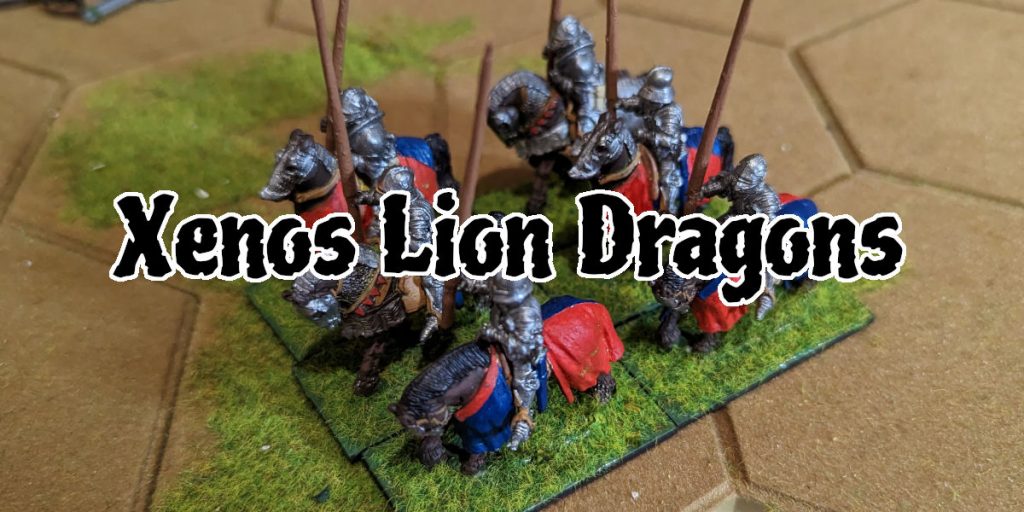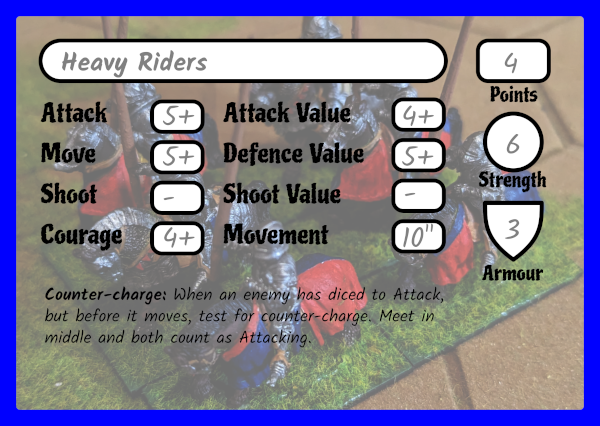Rampant Gaming

I picked up the various *Rampant rules whilst at Salute, and I’m now looking at putting together some armies for them. The three games are Lion Rampant (the historical game), Dragon Rampant (the fantasy game) and Xenos Rampant (the SciFi/Modern game).
The three systems are very similar, which just a skinning of theme to cover the genres each of them covers. For example, Dragon Rampant includes rules on flying creatures and magic, which aren’t in the basic Lion Rampant rules. Interestingly, the Dragon Rampant is the thinnest of the rule sets by far. For a game that I’d expect to also include rules for magic and weird monsters, it was surprising. As far as I can tell, it’s completely standalone from the other rules, so it’s not even relying on them for the basics.
The rules look simple enough (without being too simple), simpler than Saga in playing due to the lack of battle boards or anything like that. One concern I do have is over the activation mechanic, which looks to be very similar in all three systems.
Basically, when you activate a unit, you need to roll for activation. This is a 2D6 roll, and you may need anything from 5+ to 7+ depending on the unit. If you fail the roll, you don’t get to activate the unit that turn. This is pretty standard, if it wasn’t for the fact that after failing an activation check you also end your turn. So basically you can roll to activate your first unit, fail, and then your turn ends.
My initial reaction is that I really don’t like this rule. I’m probably going to play it as written initially to see how it works in practice, but it seems to encourage small elite units that work individually. Trying to arrange multiple units to work together is likely to fail. Obviously, people play the game and seem to like it, so it can’t be as bad a rule as it seems. But I do have my concerns over it. There is an option that you can not end a turn on a failed activation, so I’m probably not the only person who doesn’t like it. Maybe we’ll end up going down that route.
Another issue in Dragon Rampant is that at the start of a game you roll for a special ability for your Leader. This can be a bonus, but there is a chance of it being a penalty. This seems very random. Xenos Rampant seems to have a similar trait system where there is an even higher chance of getting a bad trait. Strangely, Lion Rampant allows you to buy Leader abilities, which is far more predictable. I much prefer the Lion Rampant approach. It almost feels like the authors don’t take fantasy and SciFi/Modern gaming seriously and want to try and make it silly. There’s a time and a place for that, but I’d prefer to at least have the option of being able to design an army to be what I want.
Finally, enchanted weapons are another random feature. You can pay 1 point (out of 24 for a typical army) to give a unit magical weapons. They are quite powerful (re-roll attack dice that miss), but they are again also random. There is a 1 in 6 chance (or 2 in 6 if you pay 2 points) that the weapon is actually available in that battle. So you’re paying points for something that you very probably won’t even have. This seems like a really odd way of doing things.
So my initial reaction has been one of disappointment. I’m reasonably happy with Saga for historical. It struggles a bit with fantasy because of the small warband size though. Stargrunt has some nice features for SciFi (or modern), but is a lot of hassle managing all the chits. So I’m looking for some good fantasy and SciFi/modern rules and I was hoping the Rampant series would be it. Maybe they will be, but I’m currently not entirely convinced.
The Knights of Furyondy
For a possible fantasy game, I’m porting my Knights of Furyondy which I’ve used in both Saga and the FWGS system. These are basically human knights (inspired by the Kingdom of Furyondy from the World of Greyhawk setting) backed with magical creatures.
We get 24 points to spend, and the core of the army will be units of Heavy Riders. A unit is worth 4 point, and has a strength of 6. The strength is both the number of figures in the unit, and also how many hits it can take. Each hit takes away a figure.
I’ve put together some stat cards for the units, so I can have quick access to them during the game. They are A6 in size, and I’ve got some A6 card for the printer which works fine. I’m still playing with the idea of the background image to denote the unit. A fainter image makes the text more readable, but makes unit identification harder.

The Attack, Move and Shoot numbers in the left column are the number needed (on 2D6) to activate the unit for one of those actions. I did want to take Elite Riders, who have an Attack activation of 4+, but a move activation of 7+. Which means they’re great for sitting around waiting for something to come within charge range, but no good at actually moving around the battlefield. An extra 50% cost for a unit that would be difficult to move didn’t seem worth it.
The Attack Value, Defence Value and Shoot Values are the number that is needed (on 1D6) to score a hit. You divide the number of hits by the target unit’s armour, and that is how many figures are killed.
A Leader is a ‘reduced model unit’, which means though it may have a strength of 6 or 12, it can be represented by only a few (or even one) figures. A different way to determine it’s strength is needed (such as a die) other than figure removal.
I also have a Dragon unit, which currently comes to 12 points. Which is a lot, so I might use a Treant or Giant instead. I also have heavy foot, and probably a unit of archers or slingers. I do want fewer units rather than lots of cheap units, because I’m worried I won’t ever be able to make use of cheap units due to the activation rules.
For similar reasons I won’t bother will spell casters initially. Spells are difficult to activate, which means I’ll probably not want to risk using them, making it not worth taking.
So I just need to finish off the army, and then find an opponent and a suitable scenario. If it does go okay, I may take a look at putting together my GZG armies under the Xenos Rampant rules.
1 Response